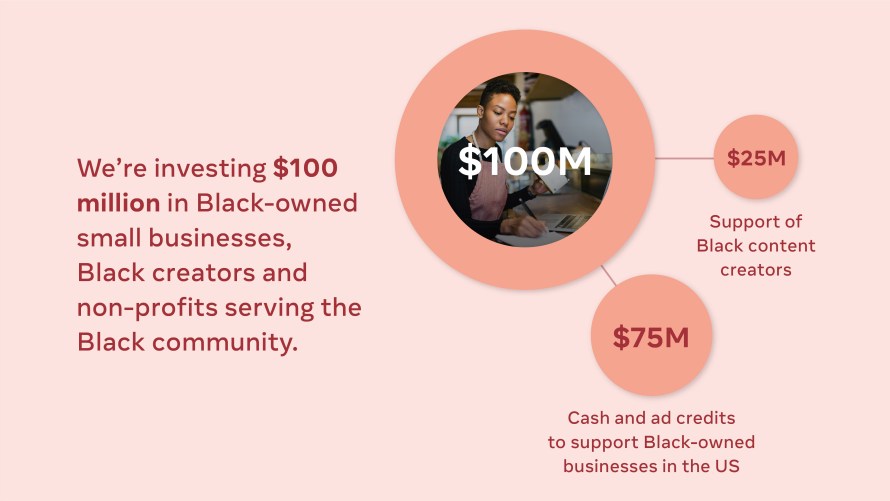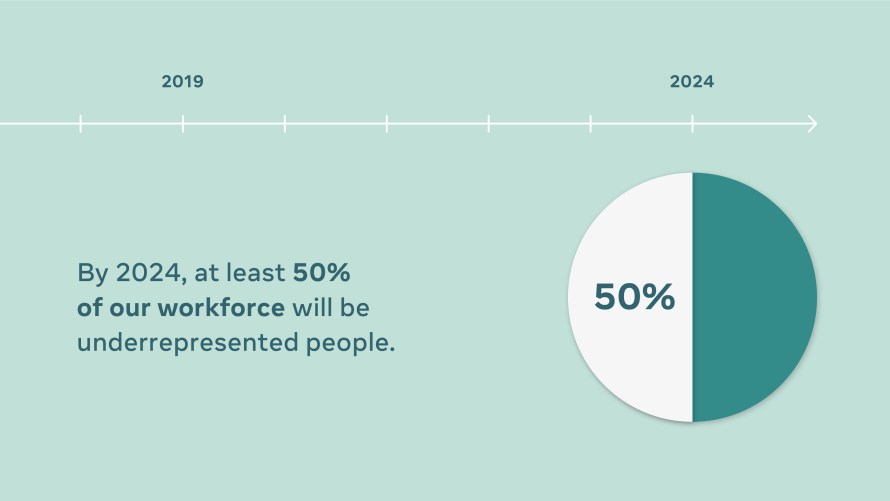Around the world, people are suffering. And this suffering has fallen brutally and unequally on the most vulnerable among us because of imbalances in resources, power and opportunity.
We’ve seen people of color — Black, Latinx, Indigenous peoples — as well as those with disabilities, veterans, the elderly, and those who work on the front lines, dying at higher rates from COVID-19. We’ve seen Black Americans killed flagrantly, as if their lives do not matter; women subject to increased domestic abuse in their homes; xenophobic epithets hurled at Asians and people of various religions; violence against LGBTQ people, and so much more. We know in our hearts that our common humanity has not bred a common reality.
At the same time, in every crisis, there are opportunities to help, to serve and to bring people together — to stand for community and, more importantly, to act for community. This has been our mission from day one at Facebook, and we want inclusion to be a leading factor — not a lagging one — in everything we do.
When the pandemic struck, we pivoted everything toward helping communities make their way through it. We built a Coronavirus Information Center, helped local news outlets continue their critical services, and helped researchers use data to track the spread of the disease and inform effective response efforts. When it became clear that certain communities were suffering disproportionately, not just from the disease but also from the country’s economic hardship, we committed millions of dollars to minority-, women-, and veteran-owned businesses, organizations and nonprofits.
The starkness of the violence against Black bodies — which Black people have experienced and made known to the world for centuries — captured global attention after George Floyd’s public murder, and it was as if the world took a breath, just as he lost his.
Facebook acted on employee ideas to build products that help in the fight for racial justice. We committed to spend $1 billion with diverse suppliers in 2021, including $100 million with Black-owned businesses — and we pledged another $100 million in grants and ad credits to Black small and medium-sized businesses, creators and non-profits in the US, among other financial investments. And because voting is the best way to have a voice in a democracy, we launched the largest voter registration and information campaign in US history ahead of the elections this fall.
Recovering from this pandemic will take years. Ending the centuries-old scourge of racial violence and xenophobia will take longer still. And we will continue to empower and give voice to marginalized people and communities, on and off our platform, in the years to come.
Our 2020 Diversity Report outlines many of the steps we’ve taken to improve diversity and inclusion in our own workforce. We have increased representation for women, Black and Hispanic people across every category we track.
For example, from 2014 to 2020, US Black representation as a percentage of our workforce in non-technical roles grew from 2% to almost 9%. US Hispanic representation in similar roles grew from 6% to almost 11%. Women in leadership have grown similarly from 23% to 34.2%.
Numbers for technical roles have remained more stubborn. Our greatest success has been among women, with an increase from 15% to 24.1%. While the representation of Black and Hispanic people in technical roles has increased, from 1% to 1.7% for Black in Tech and from 3% to 4.3% for Hispanic in Tech, progress has been slower than in non-technical roles. Increasing representation in technical roles, and overall, remains a major focus of our efforts in the immediate and long term.
Last year, we set the goal of “50 in 5,” which means that by 2024, at least 50% of our workforce will be underrepresented people. In doing this, we aim to double the number of women employees globally and double the number of Black and Hispanic employees in the US. When we announced this goal last year, people from underrepresented groups accounted for 43% of our staff. Today, that number is up to 45.3%.
This year, we are making an additional commitment: to increase the representation of people of color in leadership positions in the US by 30%, including a 30% increase in the representation of Black people in leadership, by 2025.
These numbers, of course, are only one part of our story. We aim to create a workplace at Facebook where everyone has opportunity with dignity — an environment where people earn equal pay for equal work. For many years, we have conducted pay equity analyses, and continue to be committed to pay equity. Our analyses confirm that we continue to have pay equity across gender globally and race in the US for people in similar jobs, accounting for factors such as location, role and level.
Research like that of the Ford Foundation and Kapor Center in the Tech Leavers Study, which examined why thousands of people voluntarily left their jobs across the tech sector, has made it clear that experiences in the workplace differ dramatically across groups, and that unfairness is a key driver. Some people who work at Facebook are having the best experience of their professional careers; others, sadly are not. That’s why having fair systems is a top priority at Facebook. And, closing this gap to get to more fair and consistent experiences is a key goal.
We’ve made a number of changes to our company in the past year, including improving our performance system to enhance inclusion, creating additional reporting channels for discrimination and policy violations, and launching a tool for surfacing microaggressions to the leaders who bear responsibility for our culture and environment.
We’ve also elevated the Diversity and Inclusion function so that it reports directly to our COO and is now represented in our CEO’s senior leadership meetings, putting inclusion front and center in every leadership decision. We have increased the accountability of senior leaders, whose performance is measured against concrete diversity and inclusion action plans, with consequent reflection in their performance reviews. And we have created workstreams to fight racial injustice and dedicated full-time teams toward inclusion and equity in product development.
We remain committed to building a company in which all of our employees are seen, heard and valued — and a global community where everyone has access to opportunity with dignity. To learn more explore the 2020 Diversity Report.

